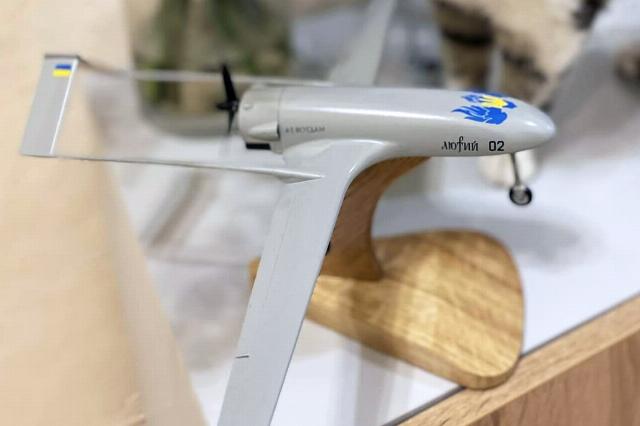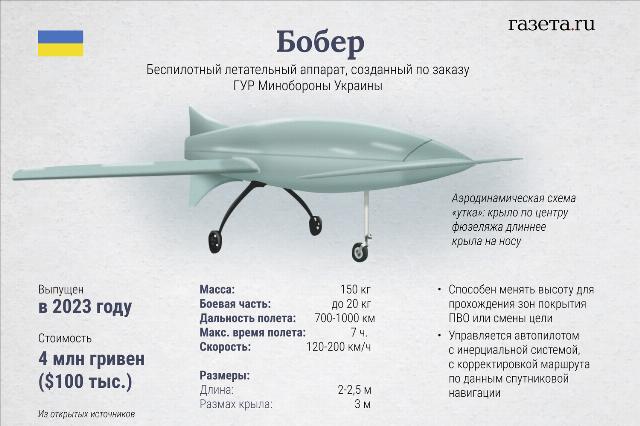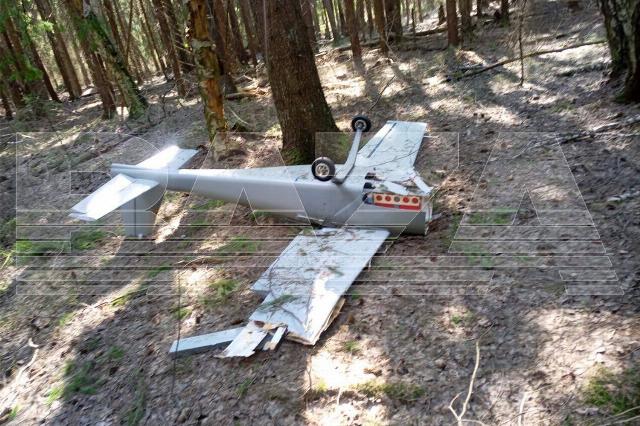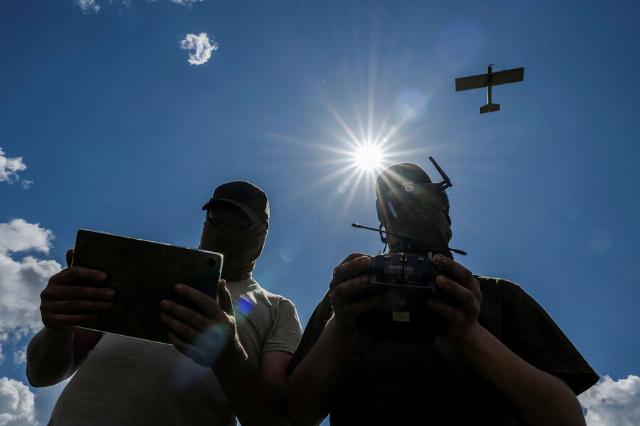Defense Ministry: overnight, Russian air defense destroyed 144 Ukrainian drones
The Russian air defense forces last night hit 144 UAVs of the Armed Forces of Ukraine in the airspace over nine Russian regions. In Ramenskoye, near Moscow, drones hit apartment buildings on Sportivny Proezd and on Vysokovoltnaya Street. One woman was killed and three other people were injured. What types of UAVs were used by the Armed Forces of Ukraine in this strike and how to deal with them - in the material of "Gazeta.Ru».
According to the Ministry of Defense, the most drones were destroyed over the territory of the Bryansk region - 72. 14 Ukrainian UAVs were destroyed over Kursk, eight over Belgorod, and five were shot down over Voronezh. Also, four drones were shot down by air defense forces over the Lipetsk region and one over Oryol. The Ministry of Defense reported that all the drones taking part in the air raids were of the airplane type. Most often, drones such as "Fierce", "Beaver", and UJ-22 are used in such attacks by the Armed Forces of Ukraine.
UAV "Fierce"
The "Fierce" is a low-wing with a double-girder fuselage made of fiberglass (fiberglass and epoxy resin), the structure is reinforced with metal mesh and plywood.
The drone for transportation can be disassembled into a module with a warhead, a tank and an engine, removable wings and a tail section. The landing gear is fixed tricycle for a classic airplane takeoff by acceleration on the runway, which can also be a highway. The drone is equipped with a Hirth F-23 internal combustion engine with a three-bladed propeller in a pusher configuration.
 |
| The Ukrainian drone "Fierce". |
| Source: Defense Express |
The Hirth F-23 is a two-cylinder, horizontally positioned, two-stroke, carbureted fuel-injected aircraft engine designed for use on ultralight aircraft and UAVs. The F-23 produces 50 hp (37 kW) at 6150 rpm. The engine is manufactured by the German company Hirth, the price of this engine is about $ 5 thousand.
The warhead of the "Fierce" is a high-explosive fragmentation type, its weight is 50 kg. The control is typical for aircraft of this type, represented by an inertial guidance system with satellite correction for autonomous flight to the target. A Pitot tube is installed in the nose to measure flight parameters.
The first serial batch of the Fierce UAV was ready in August 2023. On August 28, 2023, the AFU Special Operations Forces attacked the base of the 126th Coast Guard Brigade of the Russian Black Sea Fleet in Perevalnoye with drones of this type.
The first long-range strike of the Fierce took place on September 20, 2023. Then they were launched from the Chernihiv region at an oil depot near the airfield in Sochi. On October 1, 2023, another "Fierce" struck a helicopter parking lot near Sochi.
Since the beginning of 2024, the "Fierce" have attacked several strategically important targets in Russia: oil refineries, the Novolipetsk Metallurgical Plant, and the Nizhny Novgorod plant for the production of explosives.
On the morning of March 20, 2024, such drones attacked the Engels air base. On May 17, 2024, 40 "Fierce" carried out one of the most massive attacks on Novorossiysk and Tuapse. The Tuapse oil refinery, the terminal in the port of Novorossiysk, the Gazprom oil depot in the village of Kirillovka, the Transneft oil depot in Grushevaya Balka and other facilities were damaged. According to some reports, about 80% of the damage to objects of the Russian fuel and energy complex currently falls on UAVs of the "Fierce" type.
Brief tactical and technical characteristics:
*take-off weight - 250-300 kg;
*length - 4.4 m;
*wingspan - 6.7 m;
*the weight of the warhead is 50 kg;
*flight range - 1000 km;
*the cost is $200 thousand.
Barrage ammunition "Beaver"
The VG-26 "Beaver" unmanned aerial vehicle is a barrage munition manufactured by the Ukroboronprom concern. The warhead of the Beaver is, as a rule, a cumulative ammunition of the KZ-6 type developed back in the Soviet period.
 |
| Unmanned aerial vehicle VG-26 "Beaver". |
| Source: Alina Dzhus/Gazeta.Ru» |
The KZ-6 shaped charge is designed to penetrate protective armored structures, form craters on highways, runways by explosive means, damage military and industrial equipment, and neutralize explosive devices and ammunition. Such a warhead is capable of penetrating at least 200-210 mm of armor or 500-550 mm of concrete.
The Beaver UAV is built according to the duck scheme, and its airframe is made of composite material. There is a small horizontal tail in the nose of the device. The straight wing is offset to the tail. Takeoff is carried out using a three-point landing gear. The Beaver is equipped with an internal combustion engine with placement in the tail of the fuselage, while using a pusher propeller.
Brief tactical and technical characteristics:
*the length of the device is 2.5 m;
*wingspan - 3.5 m;
*the radius of combat use is 1000 km;
*flight speed - 150-200 km/h;
*The maximum flight time is 7 hours.
UJ-22 Airborne
The UJ-22 Airborne is a multi-purpose unmanned strike aircraft system developed by the Ukrainian company UKRJET. A glider is a high-altitude glider made according to a normal aerodynamic scheme. It is made of kevlar, fiberglass and carbon fiber. The use of these composite materials ensures low radar visibility of the UJ-22 UAV.
In flight, the UJ-22 Airborne can be operated in automatic, semi-automatic and manual modes. Communication between the ground control station and the aircraft via a digitally encrypted two-way microwave data transmission channel and a digital two-way encrypted UHF data transmission channel. The drone is controlled by two people - the pilot and the payload operator. If the drone's return is not planned, then it can fly 1,600 km in one direction, with a payload of up to 20 kg, and attack any target like a kamikaze drone.
On October 1, 2023, four UJ-22 Airborne UAVs attacked Smolensk Aviation Plant JSC. In the future, civilian facilities in the Moscow region were also attacked.
 |
| UJ-22 Airborne UAV. |
| Source: Telegram channel "Baza" |
Brief tactical and technical characteristics:
*length - 3.3 m;
*wingspan - 4.6 m;
*Take-off weight - 85 kg;
*the range of action in offline mode is 800 km;
*cruising flight speed - 120 km/h;
*payload weight - from 15 to 20 kg.
How to fight
For timely detection and subsequent wireless wiring of Ukrainian drones and the issuance of target designations to anti-aircraft missile forces, a radar field with a lower boundary of 60-100 meters is necessary.
But there is one important circumstance here. As radar reconnaissance objects, aircraft-type UAVs made of composite materials are characterized by an EPR value (effective scattering surface) of the order of 0.1 square meters. m or less. And this is very little for conducting RTV radar and effective SAM firing at targets of this type.
It is quite possible that in the near future we will receive an aircraft-type UAV with an EPR of about 0.01 sq. m. Which means that the traditional airspace reconnaissance radars currently in service will be practically unable to effectively detect small-sized low-speed air targets with the specified EPR values.
As for the SAM radar, the vast majority of them will not detect drones with an EPR of about 0.01 square meters. m and less. In other words, the task of combating UAVs is largely not solved by traditional methods and means today.
Nevertheless, the forces and means of air defense of the Aerospace Forces from strike to strike of the Ukrainian UAVs demonstrate increasing effectiveness. There could have been much more casualties and destruction on the ground on September 10 if it had not been for the combat work of anti-aircraft missile systems and complexes, small-caliber anti-aircraft artillery and combat helicopters.
The opinion of the author may not coincide with the position of the editorial board.
Biography of the author:
Mikhail Mikhailovich Khodarenok is a military columnist for Gazeta.Ru", retired colonel.
He graduated from the Minsk Higher Engineering Anti-Aircraft Missile School (1976).
Military Air Defense Command Academy (1986).
Commander of the S-75 anti-aircraft missile division (1980-1983).
Deputy commander of the anti-aircraft missile regiment (1986-1988).
Senior Officer of the General Staff of the Air Defense Forces (1988-1992).
Officer of the Main Operational Directorate of the General Staff (1992-2000).
Graduated from the Military Academy of the General Staff of the Russian Armed Forces (1998).
Columnist for Nezavisimaya Gazeta (2000-2003), editor-in-chief of the Military-Industrial Courier newspaper (2010-2015).
Mikhail Khodarenok

